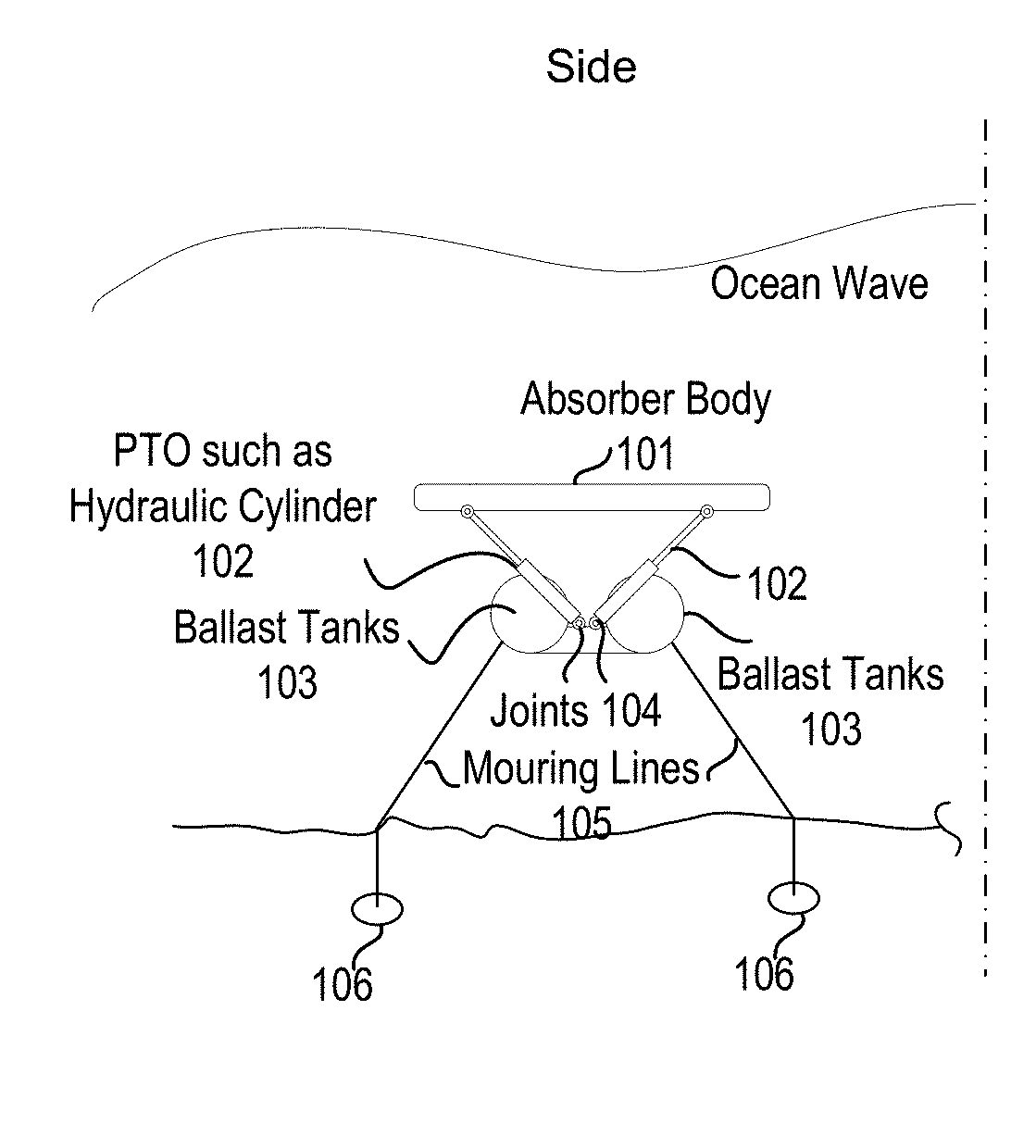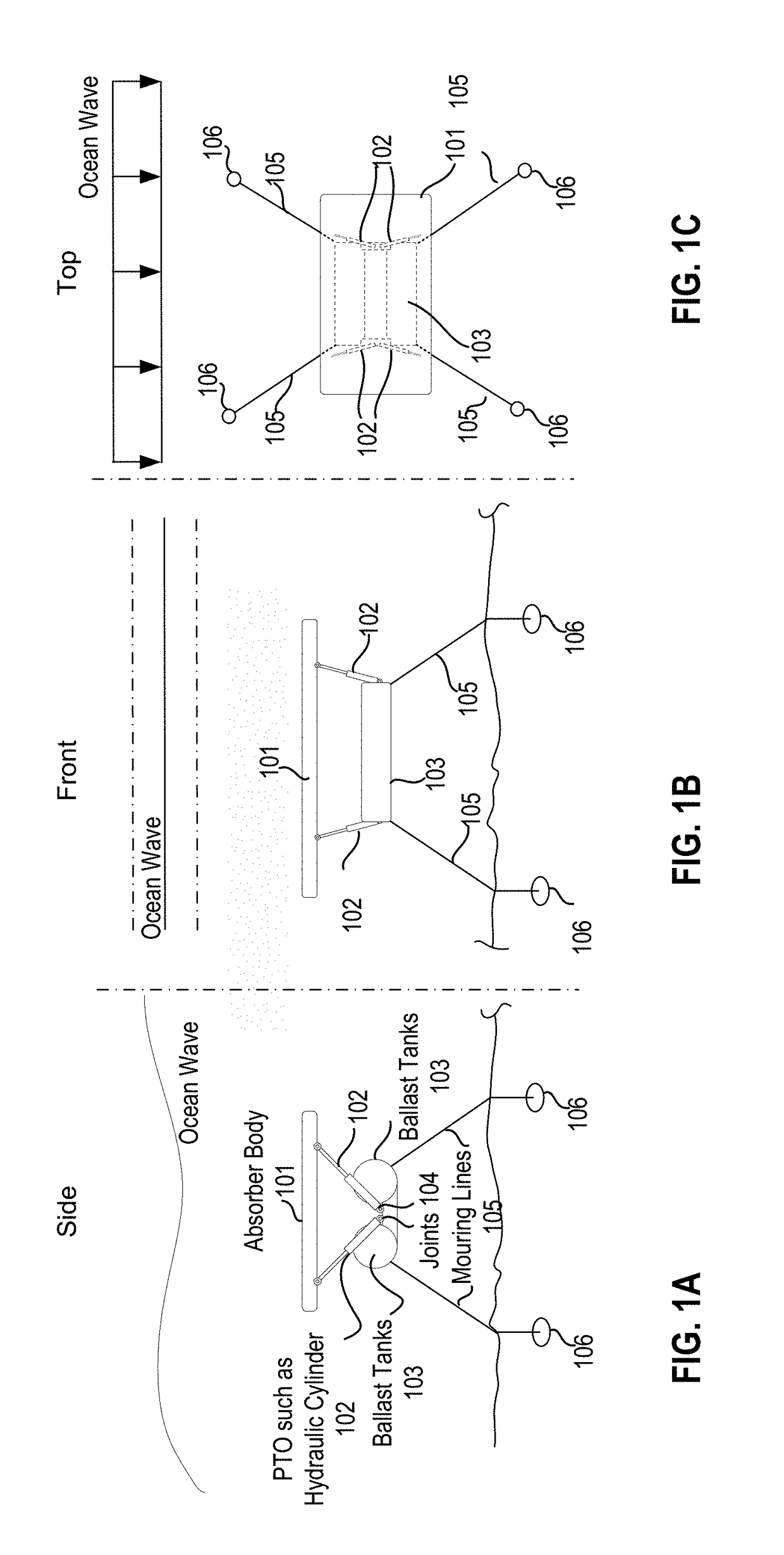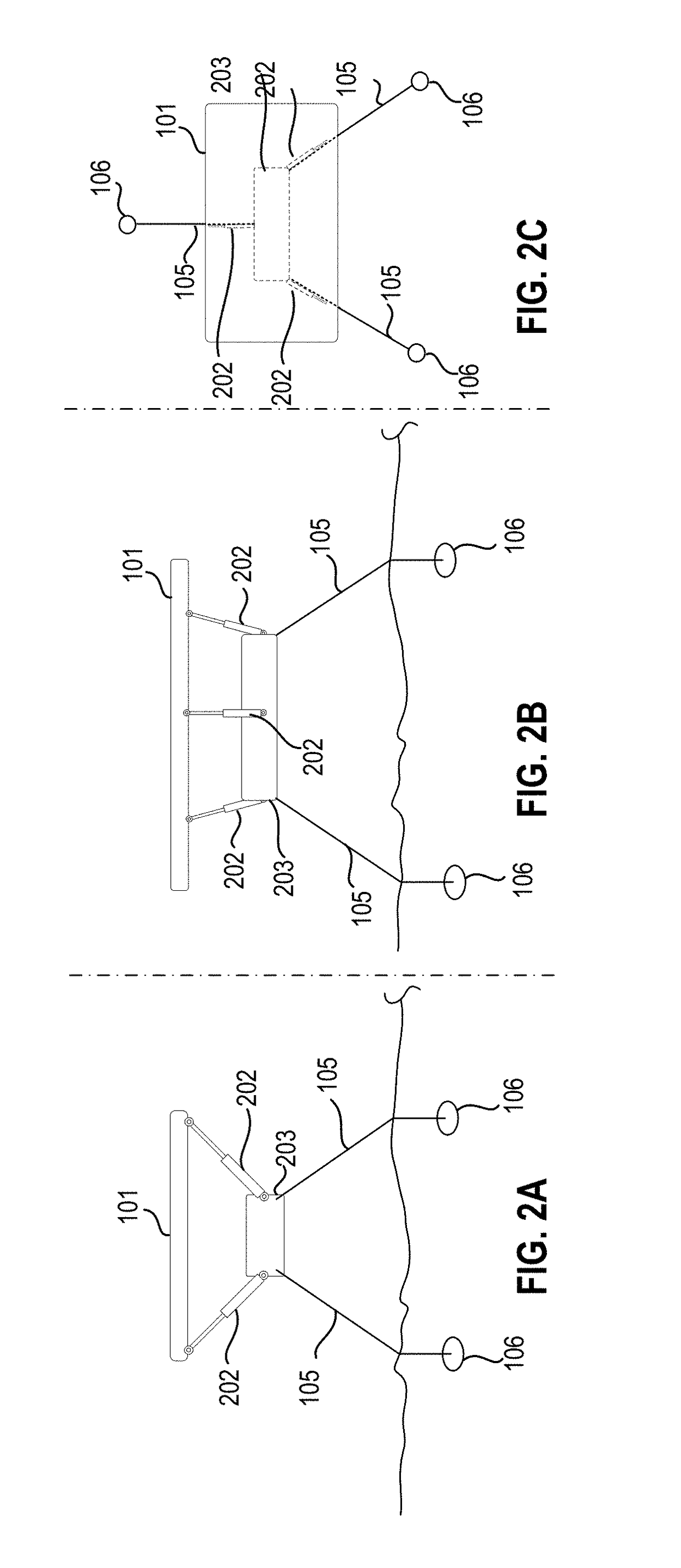Submerged wave energy converter for deep water operations
a technology of energy converter and deep water, applied in the direction of buoyancy control, mechanical equipment, machines/engines, etc., can solve the problems of slow utilization of ocean energy, few existing systems are capable of providing electricity to established power grids, and limited success in harvesting wave energy for electrical energy conversion
- Summary
- Abstract
- Description
- Claims
- Application Information
AI Technical Summary
Benefits of technology
Problems solved by technology
Method used
Image
Examples
Embodiment Construction
[0033]In the following description, numerous details are set forth to provide a more thorough explanation of the present invention. It will be apparent, however, to one skilled in the art, that the present invention may be practiced without these specific details. In other instances, well-known structures and devices are shown in block diagram form, rather than in detail, in order to avoid obscuring the present invention.
[0034]A system and method for converting wave energy of ocean waves to a motive force derived from pressure differentials created by the system's interaction with ocean water are described. In one embodiment, the system comprises at least one submersible wave energy harvesting body, at least one power take-off unit, at least one restoring force mechanism, and a reaction mechanism providing force acting on the absorber body for energy extraction. In one embodiment, the body includes a system for managing structural loads to maintain energy extraction at a high, and p...
PUM
 Login to View More
Login to View More Abstract
Description
Claims
Application Information
 Login to View More
Login to View More - R&D
- Intellectual Property
- Life Sciences
- Materials
- Tech Scout
- Unparalleled Data Quality
- Higher Quality Content
- 60% Fewer Hallucinations
Browse by: Latest US Patents, China's latest patents, Technical Efficacy Thesaurus, Application Domain, Technology Topic, Popular Technical Reports.
© 2025 PatSnap. All rights reserved.Legal|Privacy policy|Modern Slavery Act Transparency Statement|Sitemap|About US| Contact US: help@patsnap.com



